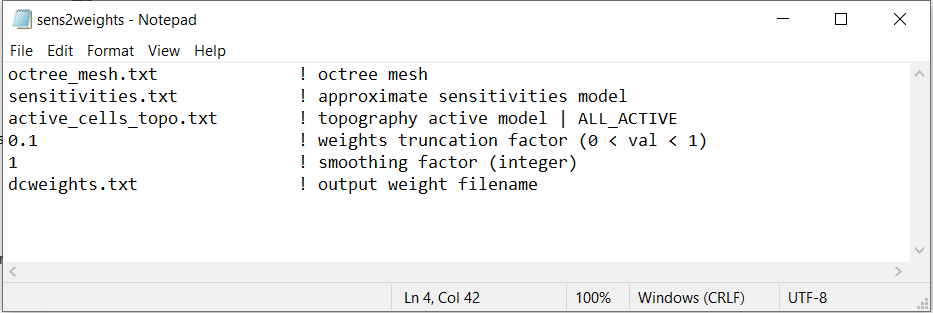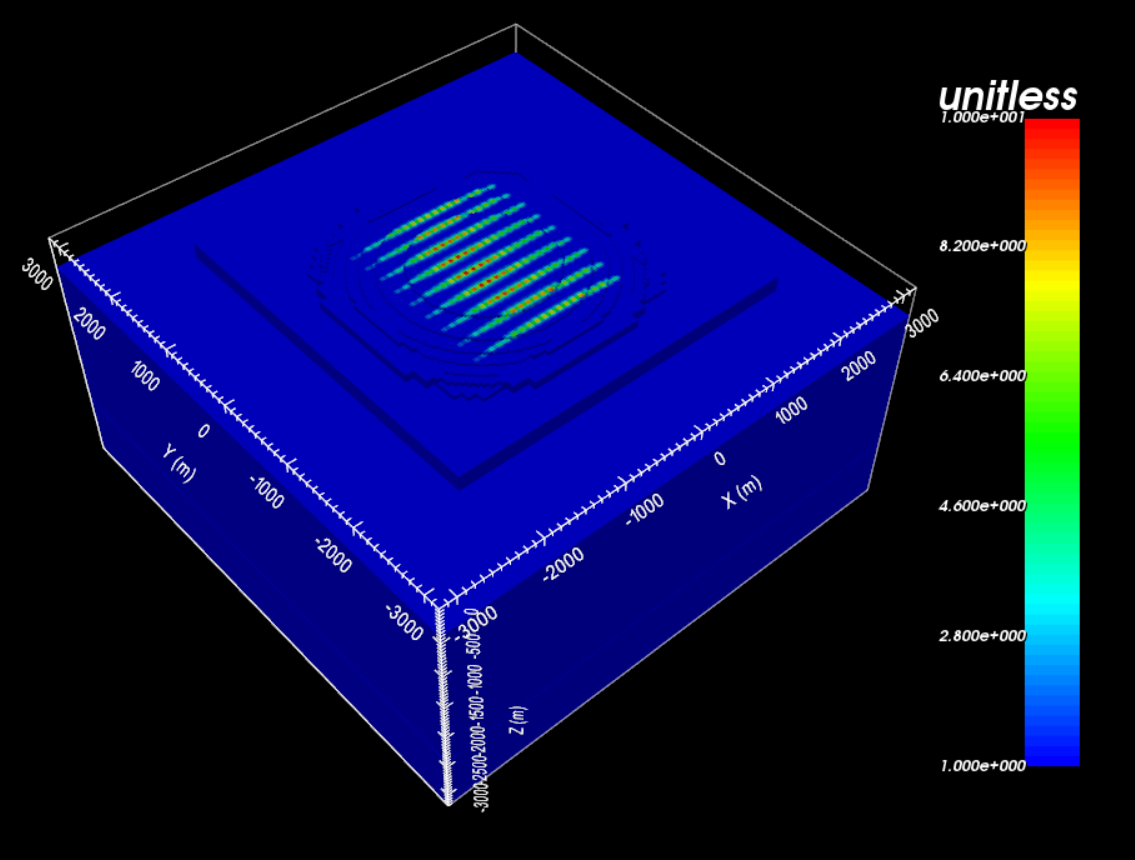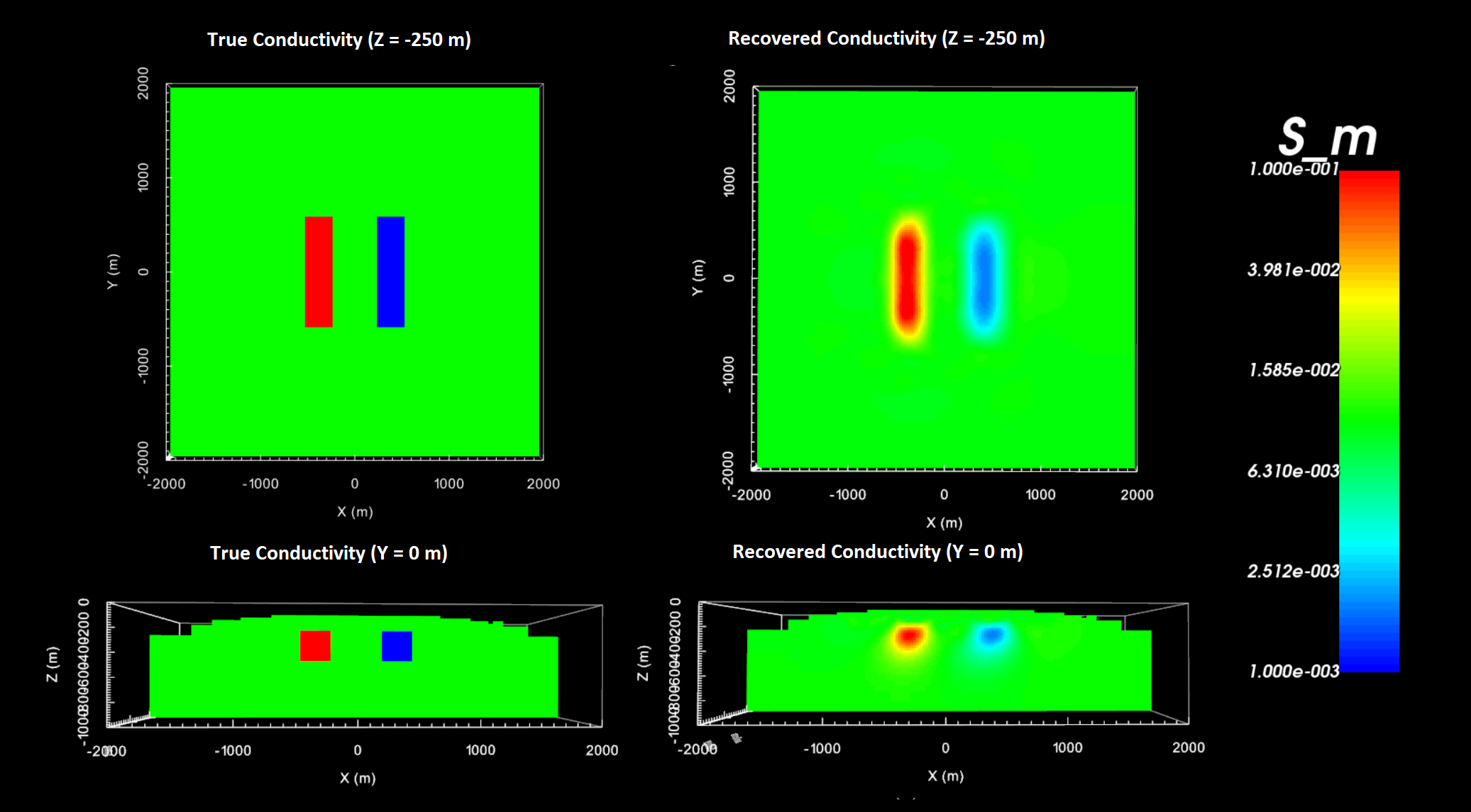5.1.5. DC Inversion¶
Here, we use dcsensitivity.exe and sens2weights.exe to compute sensitivity weights for the DC inversion. Then we use the code dcoctree_inv.exe to recover a conductivity model. Because this is a simple example with no noise, we assigned uncertainties of 1e-8 V + 1% to all DC data. In practice, data are noisy and choosing appropriate uncertainties is very important for successful inversion.
Note
Depending on the application, sensitivity and/or interface weighting may or may not improve the final model. Here we apply the weights to promote familiarity with this code. For this example, the data are very-well constrained by the data and significant weighting may not even be necessary.
5.1.5.1. Sensitivity Weights¶
Here, the code dcsensitivity.exe and the input file dcsens.inp (see format) are used to approximate the sensitivities. Then the code sens2weights.exe and the input file sens2weights.inp create a sensitivity weights file. This counteracts the inversion’s natural tendancy to incorrectly place anomalous structures near the electrodes. Files relevant to this part of the example are in the sub-folder dc_sensitivities . Before running this example, you may want to do the following:
To compute the sensitivities, the following input file was used:

To generate the sensitivity weights file, the following input file was used:

The final sensitivity weights for the DC inversion is shown below.

5.1.5.2. DC Inversion¶
Here we use the code dcoctree_inv.exe to recover a conductivity model. Before running the example, you may want to:
Files relevant to this part of the example are in the sub-folder dc_inv. To invert the synthetic data, the input file below (dc_inv.inp) was used. For formatting, see format :

The true model (left) and the final recovered model (right) are shown below.
